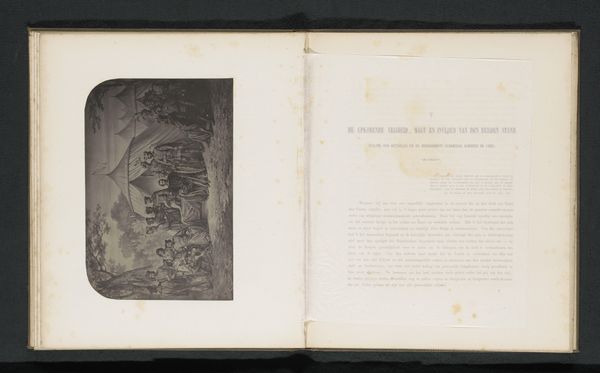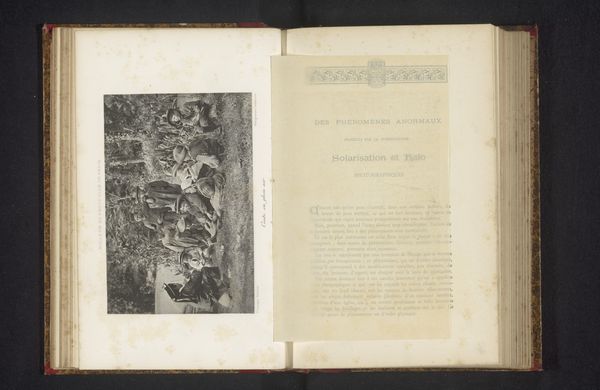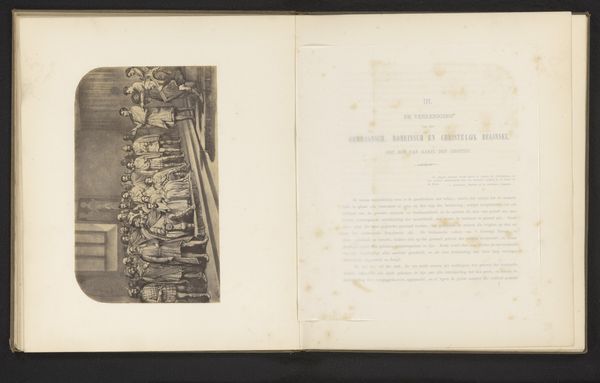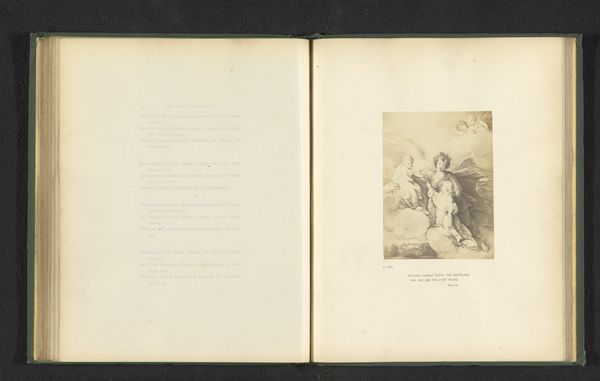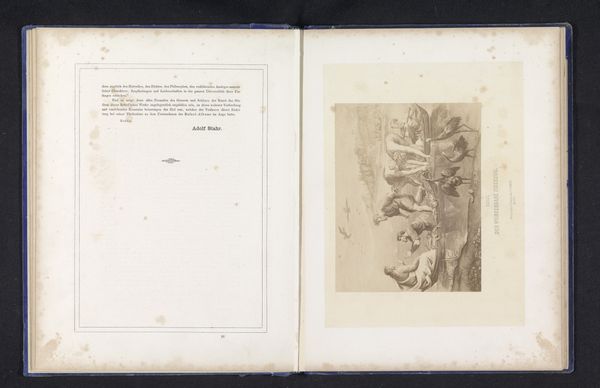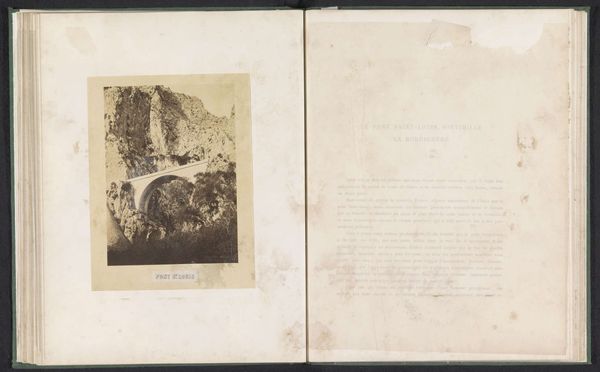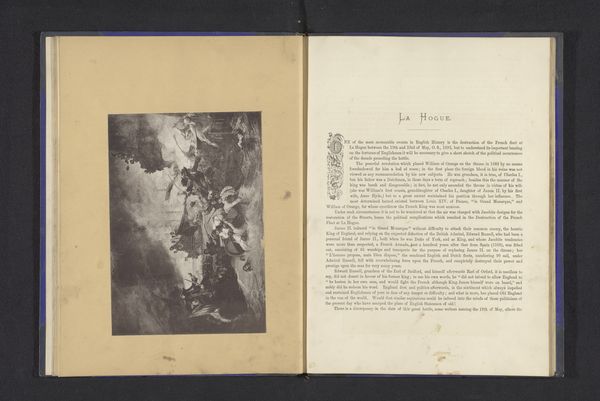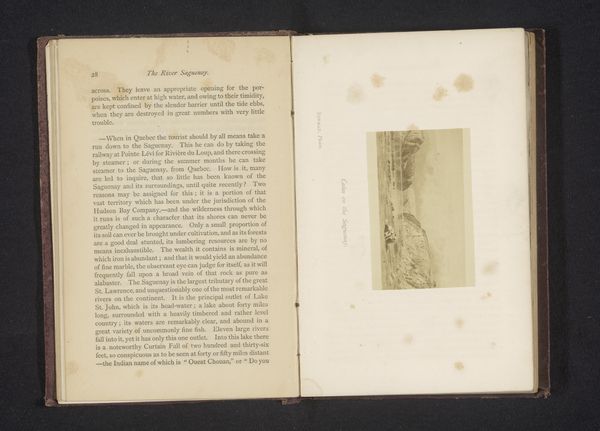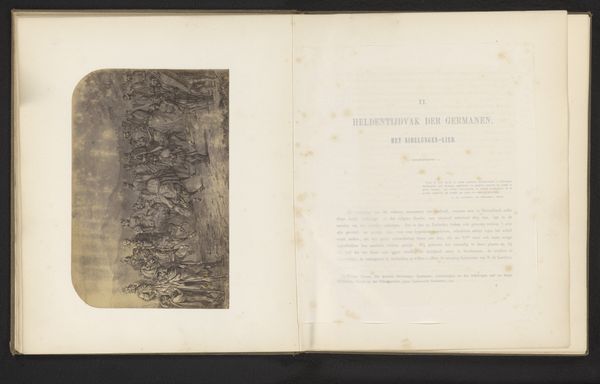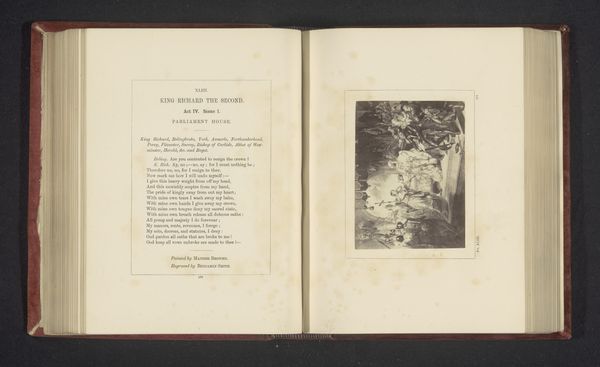
Fotoreproductie van een prent van Filips van Artevelde en de voornaamste Vlaamse burgers in 1382 before 1861
0:00
0:00
#
aged paper
#
homemade paper
#
script typography
# print
#
hand drawn type
#
hand-drawn typeface
#
fading type
#
thick font
#
history-painting
#
handwritten font
#
golden font
#
academic-art
#
historical font
Dimensions: height 140 mm, width 210 mm
Copyright: Rijks Museum: Open Domain
Curator: This print is a photo reproduction of a depiction of Filips van Artevelde with the leading Flemish citizens in 1382. The print likely dates before 1861 and it seems to me like an important example of history painting. Editor: It has such an intriguing composition. The use of dark and light is remarkable, focusing attention on the figures gathered inside the tent while blurring the edges. What's interesting is how this serves to amplify a feeling of momentous secrecy. Curator: Indeed, it appears to depict a clandestine meeting. Given that Filips van Artevelde was a key leader during a time of significant political upheaval in Flanders, such imagery helped cultivate nationalist sentiment and collective memory through art. History became very visual, very quickly! Editor: Visually, it strikes me as something bordering on academic art, and how the details blur depending on your point of view. Even the paper has its own sort of thick, rough quality that's rather remarkable given the supposed 'mass' reproduction through photography of a printed source. Curator: Absolutely. Consider the era and the accessibility of such reproductions. While the elite might have commissioned paintings, prints like these played a crucial role in disseminating imagery and narratives. Note too, the presence of handwritten-style fonts at the opposite sheet. The image thus became a tool in shaping popular opinion, albeit one with complex politics. Editor: True, the contrast between that classical scene on the left and that somewhat aged script is stark. Each side projects a sort of distinct authority in its own way. Curator: On one hand, we're clearly dealing with something intended to solidify historical legitimacy by appealing to tradition and civic identity, but equally it evokes more complex interpretations regarding representation, especially who had the privilege of narrating and visually constructing the nation's past, a sentiment still so rife today! Editor: Fascinating, really. From the careful arrangement of light to the use of antiquated fonts, this piece evokes a moment both solemn and secretive and gives such weight to this supposed gathering of the Flemish elite! Curator: Reflecting on this work has reminded me how profoundly political imagery can be, as history painters walk such a careful balance! Editor: And I am walking away intrigued by the stark duality within this bound work itself. What are its unique aesthetic markers if not just "fading fonts" and "homemade paper" alone? Food for thought.
Comments
No comments
Be the first to comment and join the conversation on the ultimate creative platform.
